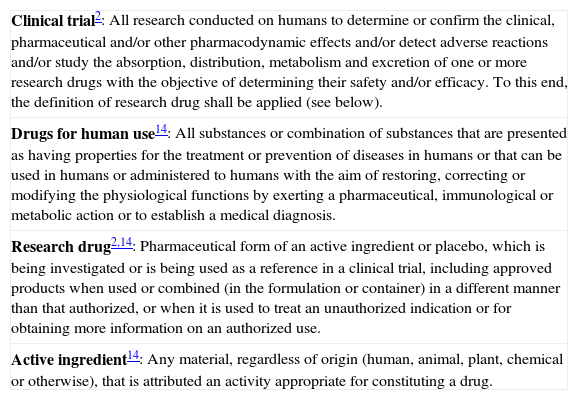The biomedical research act (BRA) regulates clinical research in humans, but not that related to clinical trials with medicinal products. This article describes the scientific and regulatory foundations supporting 2 projects which could be observed as clinical trials, and can follow the BRA requirements. One is a positron emission tomography study with radiopharmaceutical to determine the presence of amyloid-β protein deposition in certain areas of the brain of cognitively healthy adults. The other is a study on controlled malaria infection in healthy volunteers using the inoculation of aseptic, purified and cryopreserved Plasmodium falciparum sporozoites. Since in both studies subjects undergo invasive procedures, the BRA requires the approval of the study by the relevant regional health authorities. These 2 studies have been the first ones that have used this regulatory procedure in Catalonia.
La ley de investigación biomédica (LIB) regula la investigación en seres humanos pero no la relativa a los ensayos clínicos con medicamentos. Este artículo describe los fundamentos científicos y normativos por los que 2 proyectos que pueden ser observados como ensayos clínicos pueden seguir los requerimientos de la LIB. Uno es el estudio de tomografía por emisión de positrones con radiofármaco para determinar la presencia de proteína β amiloide en ciertas áreas del cerebro de adultos cognitivamente sanos. El otro es un estudio de infección controlada de paludismo en voluntarios sanos, mediante la inoculación de esporozoitos de Plasmodium falciparum asépticos, purificados y criopreservados. En ambos estudios, al incluir procedimientos invasivos, la LIB exige la autorización del estudio por las autoridades autonómicas competentes. Estos 2 estudios han sido los primeros que han utilizado este procedimiento normativo en Cataluña.
Article
Diríjase desde aquí a la web de la >>>FESEMI<<< e inicie sesión mediante el formulario que se encuentra en la barra superior, pulsando sobre el candado.

Una vez autentificado, en la misma web de FESEMI, en el menú superior, elija la opción deseada.

>>>FESEMI<<<






